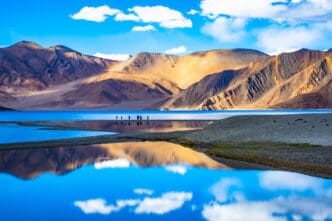For any traveler dreaming of storybook landscapes, Germany offers a journey back in time through its spectacular collection of castles. These magnificent structures, numbering in the thousands, are scattered across the country’s rolling hills, perched on dramatic cliffs, and nestled in dense forests, providing a tangible link to centuries of European history, royal intrigue, and the very folklore that inspired global fairytales. For those planning a trip, the key destinations include Bavaria’s iconic Neuschwanstein Castle, the perfectly preserved medieval Eltz Castle, and the majestic hilltop fortress of Hohenzollern. Visiting these sites, best experienced during the temperate shoulder seasons of spring and autumn, allows travelers to step directly into the pages of history and witness the architectural ambitions that have captivated the world for generations.
The Fairytale King’s Masterpiece: Neuschwanstein Castle
No discussion of German castles is complete without Neuschwanstein. This is not just a castle; it is a 19th-century romantic ideal brought to life, a fantasy of medievalism commissioned by a king lost in his own world.

Located in the heart of Bavaria near the town of Füssen, Neuschwanstein rises from a rugged hill against the breathtaking backdrop of the Alps. It was the personal project of King Ludwig II, often called the “Fairytale King,” who designed it not for defense but as a private retreat and a grandiose homage to the composer Richard Wagner.
A Dream Built on a Cliff
Construction began in 1869 but was never fully completed, as Ludwig II died before his vision was realized. The castle’s design is a pinnacle of Romanesque Revival architecture, with soaring white towers, ornate turrets, and intricate frescoes depicting scenes from Wagnerian operas.
Its ethereal beauty is so powerful that it famously inspired Walt Disney’s design for the Sleeping Beauty Castle, cementing its status as the quintessential fairytale castle in the global imagination. The interior is just as opulent, with a two-story throne room, a singer’s hall, and lavishly decorated private chambers.
Planning Your Visit
Due to its immense popularity, a visit to Neuschwanstein requires careful planning. Tickets are for a specific, timed entry and sell out weeks, or even months, in advance during peak season. It is essential to book online through the official website.
To reach the castle, most visitors take a train to Füssen and then a local bus to the village of Hohenschwangau. From the ticket center, you can either walk up the steep hill (about 30-40 minutes), take a shuttle bus, or enjoy a horse-drawn carriage ride for a more romantic approach.
For the most iconic photograph, head to the Marienbrücke (Mary’s Bridge), a pedestrian bridge suspended over a gorge that offers a picture-perfect view of the castle. Be prepared for crowds on the bridge, but the photo opportunity is well worth the wait.
The Quintessential Medieval Fortress: Eltz Castle
In stark contrast to Neuschwanstein’s romanticism, Burg Eltz (Eltz Castle) offers an authentic glimpse into the medieval world. Tucked away in a lush valley and encircled by the Elzbach River, its remote location helped protect it from centuries of conflict.

This is one of the few castles in the region that has never been destroyed. More remarkably, it has remained in the possession of the same family for over 850 years, spanning more than 33 generations.
A Castle Undefeated
The castle’s unique appearance stems from its history as a Ganerbenburg, a castle inhabited by several families or branches of a family at once. Over the centuries, the three branches of the Eltz family built their own residential towers, resulting in a cluster of eight towers and a fascinating mix of architectural styles.

This organic growth gives Eltz Castle its distinctive, almost chaotic silhouette, a far cry from the singular vision of Neuschwanstein. It feels less like a palace and more like a fortified village, a testament to its practical, defensive origins.
Experiencing Eltz
Access to the castle’s interior is by guided tour only, which is included in the price of admission. These tours are expertly run, offered frequently in multiple languages, and bring the history of the castle and its inhabitants to life.
Your ticket also grants access to the Treasury (Schatzkammer), located in the cellars. This collection is considered one of Europe’s most important, featuring priceless gold and silver artifacts, jewelry, porcelain, and weaponry accumulated by the Eltz family over centuries.
Reaching Eltz requires more effort than other castles. You can drive and park nearby, followed by a short walk or shuttle bus ride. Alternatively, you can take a train to Moselkern and embark on a scenic 90-minute hike through the forest, which reveals the castle dramatically as you approach.
The Swabian Crown Jewel: Hohenzollern Castle
Perched majestically atop a conical mountain in the Swabian Alps, Hohenzollern Castle looks like it was plucked from a fantasy epic. This is the ancestral seat of the Hohenzollern dynasty, the family that eventually rose to rule Prussia and become German Emperors.

The current structure is the third castle built on this site. After the previous fortress fell into ruin, it was rebuilt in the mid-19th century in the English Gothic Revival style by King Frederick William IV of Prussia, who wanted to create a grand monument to his family’s lineage.
A Royal Seat in the Clouds
The castle’s dramatic location is its defining feature. On a clear day, the panoramic views from its ramparts stretch for miles across the surrounding countryside. On overcast days, the castle often pokes through the clouds, creating a truly magical and unforgettable sight.

While Neuschwanstein was a private fantasy, Hohenzollern was a statement of dynastic power. Its interior is richly decorated with elaborate wood carvings, stained glass windows, and historical paintings. The treasury contains significant artifacts, including the Crown of Wilhelm II, the last German Emperor, and personal items belonging to Frederick the Great.
Tips for Visitors
Hohenzollern is a living museum that hosts numerous events throughout the year, from open-air cinemas and concerts to one of Germany’s most beautiful Christmas markets. Always check the official website for event schedules before your visit.
Like the other major castles, it’s wise to book tickets online in advance. A shuttle bus is available to transport visitors from the main parking lot up the steep, winding road to the castle entrance, which is highly recommended.
Beyond the Big Three: Other Must-See German Castles
While Neuschwanstein, Eltz, and Hohenzollern often top the lists, Germany’s landscape is dotted with other enchanting fortresses worthy of any itinerary.
Heidelberg Castle: Romantic Ruins

Overlooking the charming university town of Heidelberg, these famous ruins are a powerful symbol of German Romanticism. A mix of Gothic and Renaissance architecture, the castle was ravaged by wars and lightning strikes in the 17th and 18th centuries. Today, its red sandstone walls stand in partial ruin, creating a hauntingly beautiful scene. Don’t miss the Great Heidelberg Tun, an enormous wine barrel with a capacity of over 220,000 liters.
Reichsburg Cochem: A Riverside Sentinel

Dominating the picturesque town of Cochem from a hill blanketed in vineyards, Reichsburg Cochem is a fairytale castle overlooking the Moselle River. The original 12th-century castle was destroyed by French troops, but a wealthy Berlin businessman rebuilt it in the 19th-century neo-Gothic style. Its soaring towers and idyllic setting make it a highlight of any Moselle Valley tour.
Wartburg Castle: A Bastion of History

For history buffs, Wartburg Castle is an essential pilgrimage. This UNESCO World Heritage site, perched on a cliff near Eisenach, is one of the best-preserved medieval castles in Germany. Its historical significance is immense: it was here that Martin Luther, in hiding, translated the New Testament into German, an act that profoundly shaped the German language and the course of the Protestant Reformation.
Practical Tips for Your German Castle Tour
Navigating Germany’s castle country is part of the adventure. A rental car provides the most freedom, especially for reaching remote sites like Eltz Castle and allowing you to explore the scenic roads between destinations.
However, Germany’s public transportation system, particularly the Deutsche Bahn rail network, is incredibly efficient and connects major cities with the towns nearest the most popular castles. For Neuschwanstein, Heidelberg, and Cochem, the train is an excellent option.
The best times to visit are the shoulder seasons of spring (April-May) and autumn (September-October). You’ll find pleasant weather, fewer crowds than in summer, and the stunning beauty of blooming gardens or vibrant fall foliage. Winter offers a magical experience with snow-dusted turrets and festive Christmas markets, but be aware that some castles may have reduced hours or be closed for maintenance.
Germany’s castles are far more than just stone and mortar; they are the keepers of a nation’s soul, repositories of art, and the settings for legends that continue to inspire. Whether you are drawn to the romantic fantasy of a 19th-century palace or the rugged authenticity of a medieval fortress, a tour of these historic landmarks is a journey into the very heart of European culture and an adventure that will stay with you long after you’ve returned home.








